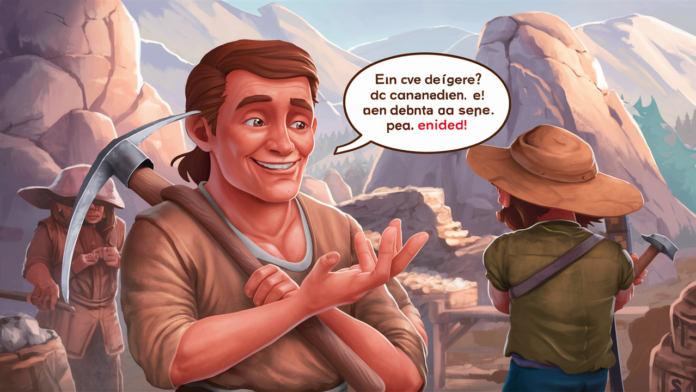Let’s face it: learning how to say things politely in another language can make all the difference. Whether you’re traveling through Latin America, chatting in a Spanish Minecraft server, or helping out a friend at a job site in Spain, being polite opens doors (and gets you that pickaxe without awkward stares).
When Would You Say This?
Picture this you’re deep into a mining mission in Minecraft, and your buddy’s pickaxe is way better than yours. Or maybe you’re volunteering on a Spanish-speaking farm. Either way, asking “May I borrow your pickaxe?” the right way can be super helpful.
Breaking Down the Sentence
Translating “May I Borrow”
The phrase “May I borrow” in Spanish can be translated in a few different ways depending on the tone and context.
-
¿Puedo tomar prestado…? – “Can I borrow…?”
-
¿Podría tomar prestado…? – “Could I borrow…?” (more polite)
-
¿Me prestas…? – Informal: “Will you lend me…?”
The Word for “Pickaxe” in Spanish
The correct Spanish word for pickaxe is:
-
Piqueta (commonly used in Spain)
-
Pico (also means “pick” or “pickaxe” in Latin America)
So you can say “tu pico” or “tu piqueta” for “your pickaxe.”
Politeness in Spanish Culture
In Spanish-speaking cultures, politeness really matters. Tone, word choice, and even body language affect how you’re perceived. A polite request earns you more than just a tool it earns respect.
Different Ways to Say It
Formal vs Informal Approaches
-
Formal (to a stranger or authority figure):
¿Podría tomar prestado su pico, por favor?
(“Could I borrow your pickaxe, please?”) -
Informal (to a friend):
¿Me prestas tu pico?
(“Will you lend me your pickaxe?”)
Using “Podría” vs “Puedo”
-
“Puedo” means “Can I” – casual and direct.
-
“Podría” means “Could I” – softer and more polite.
Use “podría” when you want to sound extra respectful.
Examples in Real-Life Contexts
-
At a job site:
Disculpe, ¿podría prestarme su piqueta un momento?
(“Excuse me, could you lend me your pickaxe for a moment?”) -
In a game:
Ey, ¿me prestas tu pico? El mío se rompió.
(“Hey, can I borrow your pickaxe? Mine broke.”)
The Most Polite Way to Ask
Sentence Construction
Here’s the gold standard for polite borrowing in Spanish:
¿Podría tomar prestado su pico, por favor?
This is formal, respectful, and perfectly polite.
Pronunciation Tips
-
Podría – poh-DREE-ah
-
Tomar prestado – toh-MAR pres-TAH-doh
-
Pico – PEE-koh
Say it slowly and with a smile you’ll nail it.
Adding Extra Politeness
Add words like:
-
“Disculpe” – Excuse me
-
“Por favor” – Please
-
“Muchas gracias” – Thank you very much
Example:
“Disculpe, ¿podría prestarme su pico, por favor? Muchas gracias.”
Common Mistakes and How to Avoid Them
Direct Translations That Sound Rude
Saying “¿Puedo tomar tu pico?” is grammatically fine but may sound too blunt. Always add “por favor” or soften it with “podría.”
Grammar Mix-ups
Watch for gender agreement:
-
Prestado (borrowed) must match the gender of the noun.
-
Since pico is masculine, it’s tomar prestado, not prestada.
Forgetting Gender and Article Usage
Don’t say “el tu pico” (wrong). Say “tu pico” or “su pico” depending on formality.
Other Useful Tool-Related Vocabulary
Spanish Words for Tools
-
Hammer – Martillo
-
Shovel – Pala
-
Wrench – Llave inglesa
-
Axe – Hacha
Using Them in Sentences
-
¿Puedo usar tu martillo? – Can I use your hammer?
-
¿Me prestas la pala? – Will you lend me the shovel?
Spanish in Real Life vs In-Game
Gaming Language vs Formal Spanish
Gamers often use short, informal phrases like:
-
“Pásame el pico” – Pass me the pickaxe
-
“Lo necesito ya” – I need it now
But in real life, stick with:
-
“¿Podría prestarme su pico, por favor?”
Online Etiquette When Asking
In multiplayer games, politeness still matters. Use emojis, “pls” (porfa), or friendly tone in chat.
Using Body Language with Your Words
Nonverbal Cues in Spanish-Speaking Cultures
Spanish cultures often rely on gestures, eye contact, and tone to enhance meaning. A smile goes a long way.
How to Combine Tone, Gestures, and Words
Say the sentence gently, with a slight nod or open hand gesture. That shows humility and respect.
Learning Through Practice
Roleplaying Scenarios
Practice with a friend:
-
You: “¿Me prestas tu pico?”
-
Friend: “Claro, tenlo.”
Repeat until it flows naturally.
Flashcard Practice Tips
Make flashcards with tools and polite sentence structures. Shuffle and repeat daily.
Language Apps That Can Help
Try:
-
Duolingo – Basic vocab
-
Tandem – Practice with native speakers
-
LingQ – Real-life dialogue lessons
Conclusion
Learning to say “May I borrow your pickaxe?” in Spanish may seem like a small thing but it’s one of those subtle signs that shows respect, effort, and cultural awareness. Whether you’re deep in a mining session in Minecraft or helping out on a farm in Mexico, using the right words (and tone!) can totally change the vibe. So go on, practice it, say it with a smile, and you’ll be amazed at how far a polite question can take you.
FAQs
1. What is the word “pickaxe” in Spanish?
“Pickaxe” is most commonly translated as “pico” or “piqueta.” Both are used, depending on the region.
2. Is it better to use “puedo” or “podría”?
“Podría” is more polite and formal. Use “puedo” with friends or casual situations.
3. How do I make the phrase more polite?
Add words like “por favor,” “disculpe,” and “muchas gracias” to soften your tone.
4. Can I use this phrase in a game like Minecraft?
Absolutely! In fact, players on Spanish-speaking servers will appreciate your effort to communicate clearly.
5. Is “herramienta” the same as “pickaxe”?
Nope. “Herramienta” means “tool” in general. You’ll want to use “pico” for “pickaxe.”


